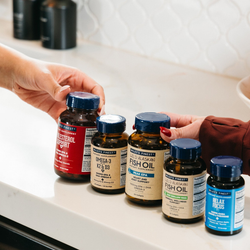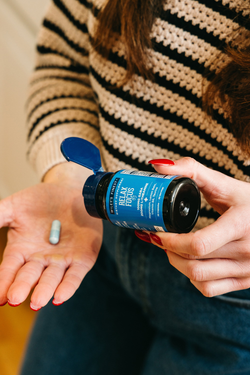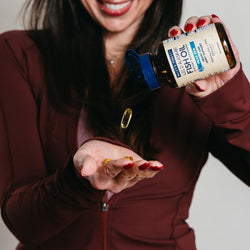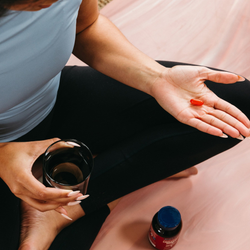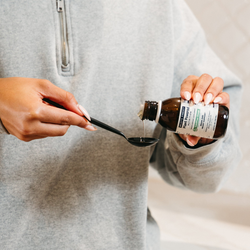FAQ
GENERAL
All Wiley’s Finest products have a guaranteed shelf life of at least 2 years when unopened in the original container and stored in a cool, dry place.
We test every lot of our fish oil products at our in-house laboratory for safety, purity, and quality. Additionally, every lot of every Wiley’s Finest product is independently tested at 3rd-party quality labs for ingredient content, heavy metals, environmental contaminants, and microbial contamination.
You can request a COA for any of our products by contacting one of our Customer Service representatives by phone at 1-855 514-4088, or by e-mail at sales@wileysfinest.com.
At Wiley’s Finest, we stand behind our products and quality controls. If for any reason you are not satisfied with a Wiley’s product you purchased from Wiley’s website or one of our authorized sellers in the United States, you may request a refund or replacement product within 45 days of the date of purchase.
Our Customer Service team is on hand to answer any questions you might have Monday through Friday from 8:00 am - 5:00 pm Eastern Time. Please feel free to reach out by phone at 1-855-514-4088, or by email at sales@wileysfinest.com.
WILEY'S FINEST WILD ALASKAN FISH OIL
Wiley's Finest Wild Alaskan Fish Oil is single species sources from Wild Alaskan Pollock, sustainably harvested in Alaska's Bearing Sea.
Marine Stewardship Council (MSC): MSC certification is considered to be the gold standard of sustainability. It is a global nonprofit organization that works to end overfishing around the world by partnering with scientists, fisheries, industry experts, and other nonprofits to improve the way our oceans are fished and by establishing and maintaining the MSC Fisheries Standard and Chain of Custody Standard.
Safe Quality Foods (SQF): SQF certification provides a framework that certified companies follow to manage food or food supplement safety and quality throughout their entire supply chain from source to shelf. It is recognized by the Global Food Safety Initiative (GFSI), meaning companies who are SQF certified show their compliance with all global food safety standards.
Ethyl Ester (EE): The Ethyl Ester form is one in which the raw fish oil is concentrated, increasing amount of Omega-3s in our fish oil formulations. This is the most common form used in Omega-3 supplements, and the one most studied in scientific literature. All of our Wiley’s Finest Wild Alaskan Fish Oil encapsulated products are in the EE form.
Re-Esterified Triglyceride (rTG): The Re-esterified triglyceride form is achieved by further concentrating the free-form Omega 3 ethyl esters, returning them to a triglyceride molecule formation. This process allows us to create the highest concentrations of Omega-3s found in our Wiley’s Finest Wild Alaskan Fish Oil liquids.
Extensive research has shown that we absorb and utilize both the EE and TG forms of Omega-3 equally well. As with all fat soluble nutrients, the priority with Omega-3 is to consume it with food to maximize absorption. Regardless of the form, it can take 2-3 months for Omega-3 levels to effectively change in our bodies, so it is important to consume Omega-3s consistently over time.
All Wiley’s Finest fish oil products contain a small amount of non-GMO Identity Preserved (IP) certified mixed tocopherols derived from highly refined soybeans (sourced from: Argentina, Spain) and sunflower.
WILEY'S FINEST PLANT POWERED NUTRITION
All Wiley’s Finest Plant Powered Omega-3 formulas are suitable for Vegan consumption. Our CatchFree Omega-3 Liquid and Softgels have been Vegetarian Society Vegan Approved.
Ahiflower®: A full-spectrum, balanced, plant-based source of essential omegas which help nourish your body.
Algarithm®: Fresh-tasting, fish-free, GMO-free, and solvent-free, vegan DHA Omega-3 from algae.
CatchFree™ Omega is not certified organic, however, both the Algarithm and Ahiflower co-branded ingredients are fully non-GMO and follow organic practices. The Vitamin D3 we use is extracted from organic lichen.
Follow the links below for more information on our ingredient partners:
Algarithm®: https://www.algarithm.ca/faq
Ahiflower®: FAQs — Ahiflower
VitaShine®: https://protecnutra.com/downloads/vitashine_brochure.pdf
Stearidonic Acid, or SDA, is a metabolite of the Alpha Linolenic Acid (ALA) Omega-3 typically found in plant foods like flax seed, chia, and walnuts, which are frequently eaten for the Omega-3 content. Our bodies convert ALA into SDA on its path to becoming the EPA and DHA Omega-3 that the body needs. This conversion process is sadly inefficient, leaving many vegans and vegetarians Omega-3 deficient. However, when SDA is consumed directly from Ahiflower Oil, the conversion path to EPA is much shorter, allowing up to a 5x higher conversion rate, resulting in higher EPA levels in the body.
WILEY'S FINEST NUTRIMENT PLUS
Nutriment. noun. nu·tri·ment ˈn(y)ü-trə-mənt.: something that nourishes or promotes growth, provides energy, repairs body tissues, and maintains life. www.merriam-webster.com
The “Plus” in our Wiley’s Finest Nutriment Plus formulas refers to the unique, targeted ingredients in each of our synergistic formulas designed specifically to help with the unique challenges of today’s busy lifestyle.
Yes, all Wiley’s Finest Nutriment Plus products are made in the USA with domestic and imported ingredients.
We have both plant and marine derived ingredients in our Nutriment Plus formulations.
For questions regarding a specific Nutriment Plus product, please contact Customer Service.
Not all Wiley’s Finest Nutriment Plus products contain Omega-3. Our non-Omega-3 formulas are a perfect fit for combining with any of our Wiley’s Finest Wild Alaskan Fish Oil or Wiley’s Finest Plant Powered Omega-3 offerings.

